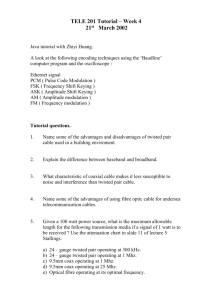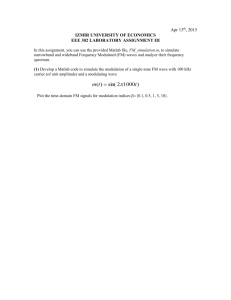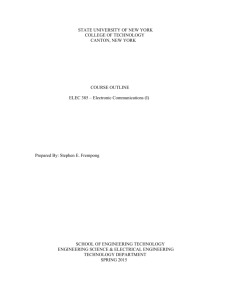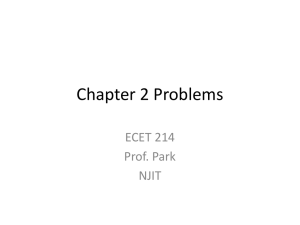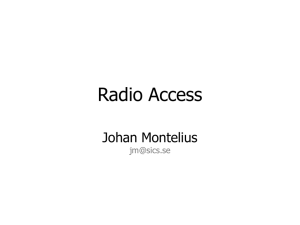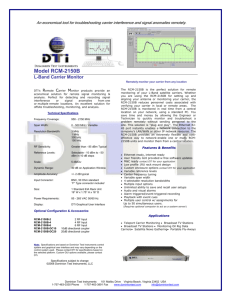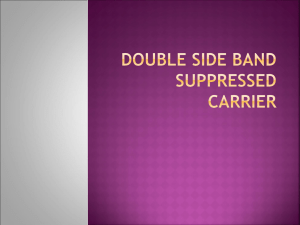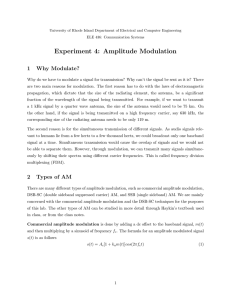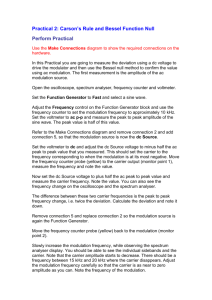Carrier Modulation in Digital Communication Systems
advertisement
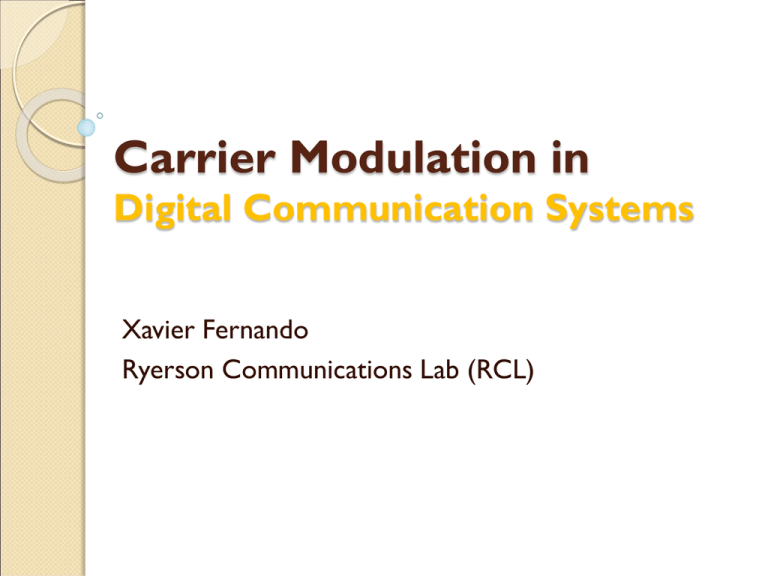
Carrier Modulation in Digital Communication Systems Xavier Fernando Ryerson Communications Lab (RCL) Why Carrier Modulation? Until now we have been looking at baseband communications The information is sampled, quantized pulse coded and transmitted in baseband However, baseband transmission is not suitable in many situations Carrier modulation is needed in these cases Fe examples are listed in the next few slides Wireless Communications Examples: FM Radio: 88 – 108 MHz WLAN – 2.4 or 5 GHz Cellular Radio: 806-890 MHz GPS: 1215 – 1240 MHz The air-interface is shared by many different users & services Each service has a certain allocated frequency Carrier modulation is needed to occupy only the given spectrum Digital Telephony/Cable Modem Many of you may have Rogers Digital Phone & Cable Modem The voice and internet data is modulated on a carrier frequency (not overlapping with TV Bands) and transmitted via cable in addition TV Channels using QPSK or 16QAM modulation TV Bands: 60-88 MHz, 180 – 216 MHz and 476-890 MHz Up Conversion Carrier modulation up converts the signal to a suitable band Baseband Bandpass Also note the bandwidth doubles Frequency Division Multiplexing (FDM) Carrier Modulation enables sharing a common channel by number of users/services


